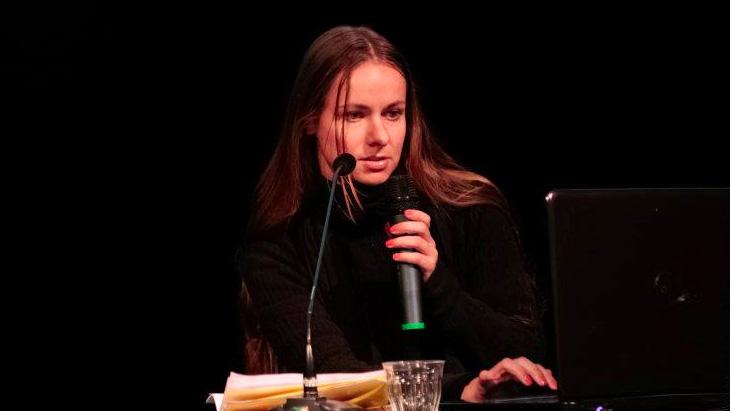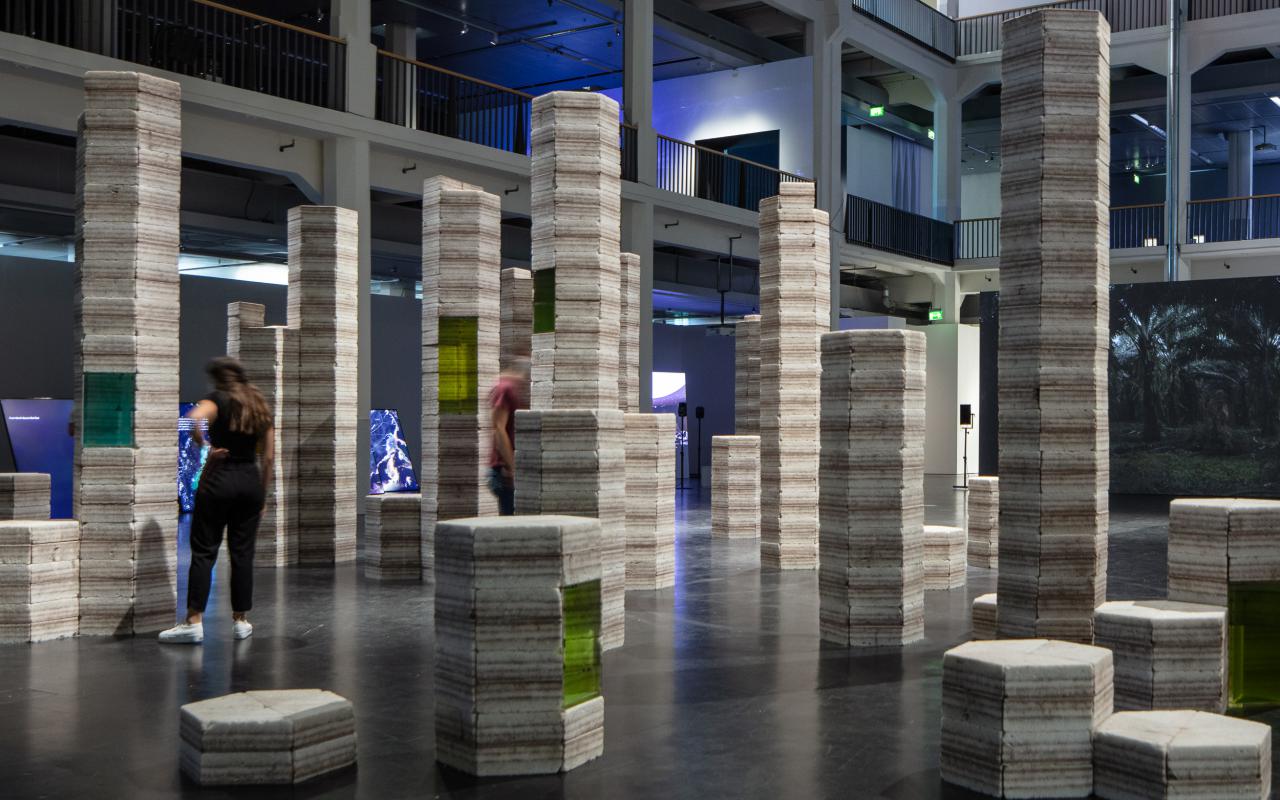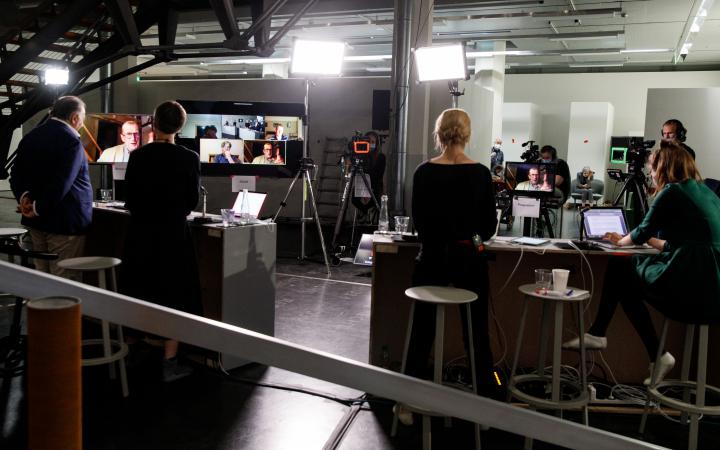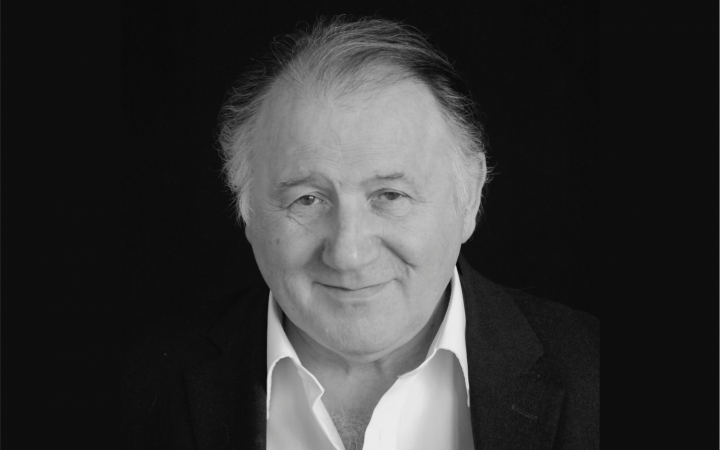![Pussy Riot, Бунт в России – Путин зассал! [Rebellion in Russia – Putin is shit-scared!], Lobnoye mesto, 2012 / © Pussy Riot Pussy Riot in action, hooded people in front of kreml](https://zkm.de/sites/default/files/styles/r17_1280_dynamic/public/bild/volkova_01.jpg?itok=7B8nPDaw)
2014-01-16
The Red Square
Free, free, free the pavement! / Egyptian air is good for the lungs / Turn Red Square into Tahrir! / Have a great day amongst strong women… / Tahrir, Tahrir, Tahrir, Tripoli!
The lyrics of the first song by the punk rock band Pussy Riot was heard on the streets of Moscow during their protest Pussy Riot захватывает транспорт [Pussy Riot hijacks public transport] on November 7, 2011, the anniversary of the October Revolution, four weeks before the mass protests in Russia began. Two months later, the radical punk feminists shouted down from the Lobnoye mesto platform [Place of Skulls] [1] on Red Square: “Take to the streets, live on Red Square! Show the freedom of citizens’ rage…”. Because of this protest on Red Square entitled Бунт в России – Путин зассал! [Rebellion in Russia – Putin is shit-scared!], the activists were arrested and received a caution for hooliganism. In March 2012, after their “punk prayer” Богородица, Путина прогони! [Mother of god, chase Putin away!] in the Cathedral of Christ the Savior, the ensuing arrests resulted in a two-year prison sentence for two of the band’s members. Unlike Tahrir Square in Cairo or Taksim Square in Istanbul, Red Square – directly next to the Kremlin, residence of the President, and center of Russian government – has never been an arena for mass protests. The center of power is inaccessible. Like in the Russian fairy tale of Koschei the Deathless, whose life is stored in a needle. Only if this needle is broken it is possible to kill the fairy tale tyrant. The needle, however, is stuck in an egg; the egg in a duck, the duck in a rabbit, and so on and so forth. It was no accident that the largest protests to date in Putin’s Russia, on May 6, 2011, did not take place in Red Square, but in Bolotnaya Square. After the authorized mass demonstration procession passed through Jakimanka Street it was brought to a sudden halt by a barrier erected at the Great Stone Bridge over the Moskva River. There, “cosmonauts” stood in rows – OMON officers [2] in helmets and protective gear, who were securing the “way to the Kremlin.”
![E.T.I., Хуй на Красной площади [khui on Red Square], 1991, in: Moskovskij Komsomolets, April 19, 1991 / © Moskovskij Komsomolets News clipping](https://zkm.de/sites/default/files/styles/r17_1280_dynamic/public/bild/volkova_03.jpg?itok=mBoxsvoo)
Nevertheless, the tradition of assigning symbolic importance to Red Square as a prime location where power is concentrated has deep historic roots in Soviet and post-Soviet Russia. The 1968 Red Square demonstration Демонстрация семерых [Demonstration of the Seven] was staged by a group of seven Soviet dissidents to protest the invasion of Czechoslovakia by Soviet troops. Within a few minutes, the demonstrators were arrested by militia officers and KGB operatives in plain clothes, then beaten up and taken to a police station. Some of the protestors were declared of unsound mind and committed to psychiatric institutions for compulsory treatment; others received prison sentences of varying lengths. In 1987, the German amateur pilot Mathias Rust flew a Cessna light aircraft from Hamburg via Helsinki to Moscow, and landed next to Red Square. He claimed that his flight was for “world peace”. Rust was charged with the violation of international air traffic laws and the illegal entry into the Soviet Union. He was sentenced to four years in prison, but pardoned. In the 1990s, Red Square became an arena for artistic performances, which mostly remained abstract and did not contain any directly political demands. In 1991, the action ЭТИ-текст [ETI Text] by the E.T.I. movement (Expropriation of the Territory of Art) took place, sometimes known as Хуй на Красной площади [khui on Red Square] [3]. With their bodies, fourteen people formed the obscene word on the pavement. The idea of the performance was to align two symbols with opposing status: Red Square as the topographic center of power on the territory of the USSR, and the word that represents the greatest taboo. In 1995, the radical Moscow action artist Alexander Brener challenged President Yeltsin to a fight on the Lobnoye mesto platform [Place of Skulls] in boxer shorts and boxing gloves. In 1998, the members of Внеправительственной контрольной комиссии [Non-Governmental Control Commission], organized by the artist Anatoli Osmolovski, broke through to Lenin’s Mausoleum with the slogan “against all,” which was very much to the fore during the election campaign of the 1990s. In the year 2000, an action titled Мягкая тараканья зачистка [Soft extermination of cockroaches] took place: A group of activists from an anti-fascist association, which included members of the artists group PG and sprayers, drew a chalk line around the Kremlin, quasi as an attempt to protect the rest of Russia from the dirt of state power.
![Petr Pavlensky, Фиксация [Fixation], Performance, Red Square, November 2013 / © Pjotr Pavlenski A naked man is sitting on the street](https://zkm.de/sites/default/files/styles/r17_1280_dynamic/public/bild/volkova_04.jpg?itok=zMkjDl27)
Towards the end of the first decade of the twenty-first century Red Square became a forum for more clearly structured political expressions of opinion as a response to the increasingly authoritarian social order in Russia. In 2008, the event Свадьба нацболов [Marriage of National Bolsheviks] took place, in which as a sign of protest around fifty people occupied the Lobnoye mesto platform, and celebrated the marriage of two members of the National Bolshevik party. In 2011, the artists Denis Mustafin, Georgy Dorokhov, and Vlad Tschischenkov organized the performance Белый флаг [White Flag]. They laid down white flags at the mausoleum as a symbol of “declaring war on one’s own conformism with the state power.” During the same year, Red Square was the final destination of the car race Novosibirsk–Moscow by the group Бабушка после похорон [Grandma after a funeral] for the legalization of parsley, which sought to expose the absurdity of Russian drug policy. Also in 2011, the Urban Partisans movement represented by the artist Make unveiled a traffic sign on the approach to Red Square which said “Осторожно! Впереди тандем!” [“Beware! Tandem!”] and which drew attention to the danger inherent in combining the offices of president and prime minister of Russia. At the beginning of the 2010s, Red Square became the venue for numerous actions of committed citizens, for example, to protest against the law punishing people for homosexual “propaganda”, referred to as “anti-Gay laws.” It was the first public action by the LGBT (lesbian, gay, bisexual, transsexual) community in Russia’s history. Or the protest Идите на хуй со своей регистрацией! [Piss off with your registration!] against the law requiring people to register their place of domicile. One of the most recent spectacular actions on Red Square was the performance Фиксация [Fixation] by Petr Pavlensky in November 2013, which he intended as a metaphor for the apathy, indifference, and fatalism of modern Russian society: With a long nail, the naked artist nailed his scrotum to the Kremlin’s pavement. Despite this pessimistic declaration we know that history does not stand still, and Red Square remains a symbolic space for the concentration of Russian state power, from which all prohibitive evils originate. At the same time, however, it also represents the most powerful resource for all kinds of activism which guarantees the highest degree of media attention.
Text: Tatiana Volkova
All articles of the blog discussion on “global aCtIVISm” Further information on: www.global-activism.de
About the author Tatiana Volkova is a curator and lives in Moscow, Russia. She is member of AICA (International Association of Art Critics), nominee of the Innovation Award (2010), and laureate of the Kariatida Award (2012). In 2000 Tatiana Volkova gained her Masters of Arts at the Academy of National Economy, Moscow; in 2004 she had a residency of the Jubilee Fellowship CEC Artslink, International Studios and Curatorial Program, New York. Tatiana has held curatorial positions at the Tsaritsino Museum, State Tretyakov Gallery, Reflex Gallery, Garage Center for Contemporary Culture, and ZHIR Gallery, Moscow. She was a member of the curatorial team for a number of major exhibitions including the 4th Cetinje Biennial of Contemporary Art in Montenegro (2002), Viewing Pad at the Moscow Central House of Artist (2003), Russian Pop-art (2005) and Sots-Art. Political Art in Russia at the Moscow State Tretyakov Gallery (2007), and Russian Utopias at the Garage, Moscow (2010). Since 2009 Tatiana has specialized in the research and development of Russian activist art. She curated a series of exhibitions of young Russian activist artists at ZHIR project, Moscow (Winzavod Art Centre, 2009–2010) as well as the Silence=Death exhibition (Artplay Centre, Moscow, 2012). Since 2011 Tatiana has been an initiator and moderator of the MediaImpact Festival of Activist Art, which was held in Novosibirsk, Murmansk, and Moscow (twice). In 2013 Tatiana became a member of the project team of the global aCtIVISm exhibition at the ZKM | Center for Art and Media Karlsruhe. Tatiana has published widely in exhibition catalogs and on the Web and given a course of lectures on Russian activist art.

________________________________
Note Translated from the German by Isaac Custance
[1] Round monument on Red Square
[2] Special forces unit of the Russian Police
[3] In Russia khui is an absolute taboo word and may be translated as “cock.”


